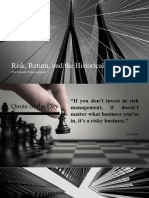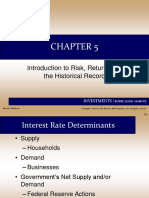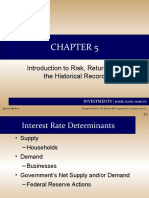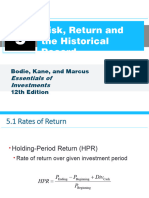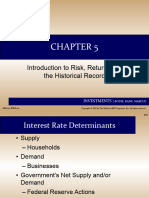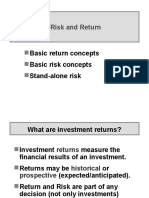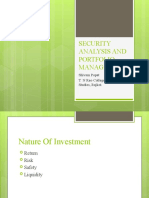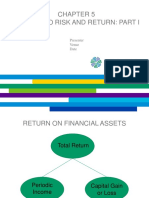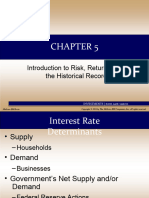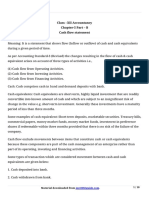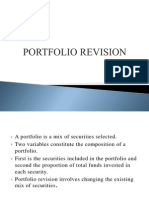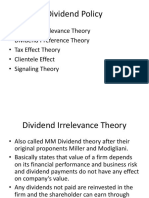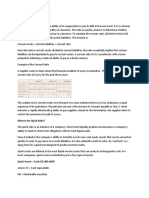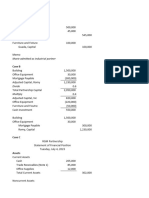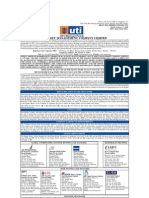0% found this document useful (0 votes)
81 views34 pagesWeek 3: Risk and Return
The document discusses different methods for measuring rates of return over multiple periods, including arithmetic average, geometric average, and dollar-weighted average. It also covers the relationship between nominal interest rates, inflation, and real interest rates. Additionally, the document examines the historical returns and risks of various asset classes like stocks, bonds, and bills in both the US and world markets.
Uploaded by
mike chanCopyright
© © All Rights Reserved
We take content rights seriously. If you suspect this is your content, claim it here.
Available Formats
Download as PDF, TXT or read online on Scribd
0% found this document useful (0 votes)
81 views34 pagesWeek 3: Risk and Return
The document discusses different methods for measuring rates of return over multiple periods, including arithmetic average, geometric average, and dollar-weighted average. It also covers the relationship between nominal interest rates, inflation, and real interest rates. Additionally, the document examines the historical returns and risks of various asset classes like stocks, bonds, and bills in both the US and world markets.
Uploaded by
mike chanCopyright
© © All Rights Reserved
We take content rights seriously. If you suspect this is your content, claim it here.
Available Formats
Download as PDF, TXT or read online on Scribd
/ 34







